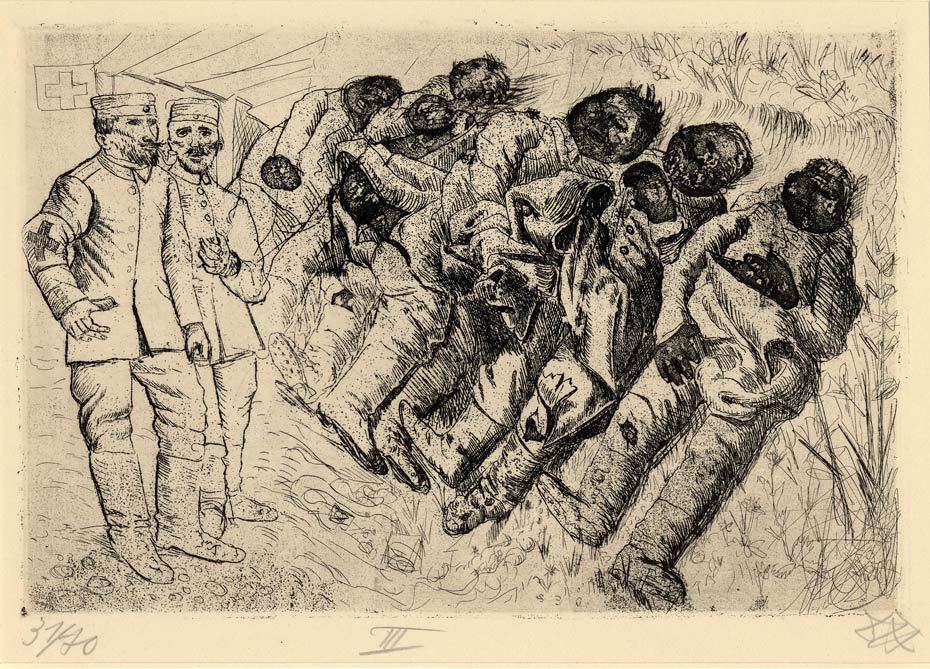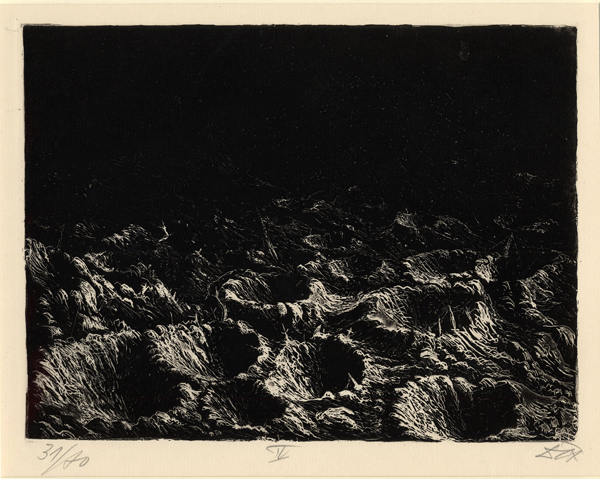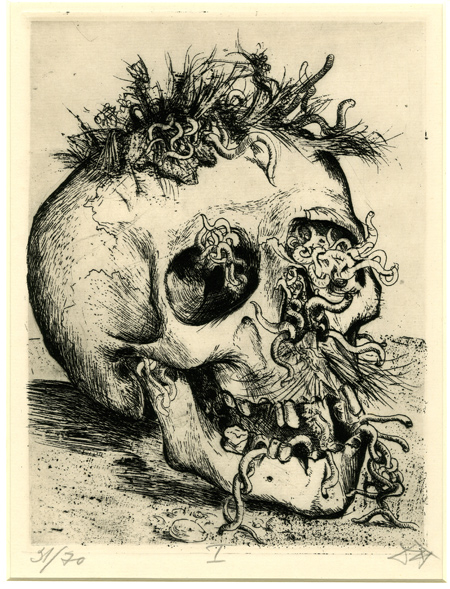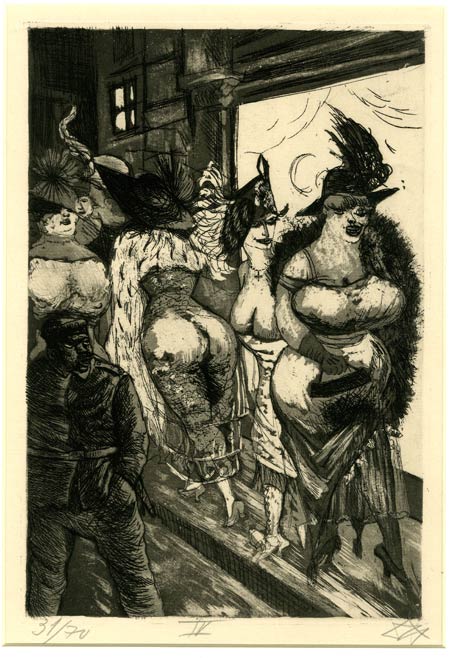Curator David Rhodes selects five prints from De La Warr Pavilion’s homage to the German artist’s World War 1 work

I started my career volunteering in the Department of Prints and Drawings at The British Museum – where these prints are on loan from – in the mid 90s. At the time I was studying Fine Art at Goldsmiths College and also exploring the collection of works on paper at the British Museum, which is second to none, and which ranges from Leonardo Da Vinci drawings to Tracey Emin monotypes. The Department of Prints and Drawings has several editions of Goya’s print series The Disasters of War from the early 19th century and through looking at these I discovered Otto Dix’s Die Krieg, which were inspired by Goya’s works from a hundred years earlier.Despite the fact that the prints were made in 1924, they felt absolutely contemporary to me. At that time Jake and Dinos Chapman had made their version of The Disasters of War, which were also in the British Museum collection. I remember seeing the Chapman’s Hell, which was included in the Royal Academy show Apocalypse in 2000, and thinking that it was like a sculptural evocation of Der Krieg.
I thought a lot about what could do at the De La Warr Pavilion to commemorate the centenary of WW1 in both an interesting way and one also relevant to our programme. I remembered the Dix prints in the British Museum collection and decided to request the loan. Some artworks are so ground-breaking in their approach that their impact and influence can remain for hundreds of years after their production. I would include Der Krieg in this category.
By 1924 people were aware of the horrors of gas though censored wartime reporting spared many from its ghastly details. But here it is depicted with the raw clarity of someone who was there. Dix was both horrified and fascinated by the experience of war. The appearance of the victims is striking, with their skin is darkened by lack of oxygen. The medical staff seem nonchalant, as if they have seen it many times before. I think Der Krieg is perhaps the most powerful, as well as one of the most unpleasant, anti-war statements of modern times. It has a quality of unmitigated truth as well as showing the ugly realities of the psychological experience. It has become commonplace to see this cycle as an admonition against the barbarity of war but it is also a powerful cautionary work.

By plate number four in the expo, the viewer begins to understand that this is no ordinary series of etchings, and here a nighttime flare illuminates what looks like a lunar landscape, but is in fact the battlefield.Dix was an artillery gunner in the trenches at the Somme and on the Eastern Front and focused on the aftermath of battle: dead, dying, and shell-shocked soldiers, bombed-out landscapes, and graves.
![Stormtroops advancing under a gas attack [Sturmtruppe geht unter Gas vor], Etching and aquatint on paper](https://storage.googleapis.com/s8partner-pm_wp/1/2014/04/Sturmtruppe-gehy-unter-Gas-vor_Der-Kreig-12-1924.jpg)
Gas clouds the atmosphere in this otherworldly scene as the soldier’s features are obscured by masks and their fingers are curled like claws. These are men who will kill by any means, if they are they still men.This nightmarish, hallucinatory quality pervades all of Der Krieg though aradoxically, there is also a quality of sensuousness and an almost perverse delight in the rendering of horrific detail. In Dix’s case, there was perhaps an almost addictive quality to the hyper-sensory input of war.
Dix’s Skull is a gruesome image of decay and worms invading a human skull, symbolic of the indescribable horrors of the First World War. For all its waste, the War provided a windfall for scavengers; generations of happy worms and maggots, and trench rats as big as beavers. Gas was sometimes a welcome respite as it decimated these pests. For Dix and other artists of the era, skulls were powerful tools in demonstrating the dark reality of the death that war inevitably brings.


An image related to Dix’s depictions of the decadence of the Weimar Republic, depicting a soldier lurking in the darkness surrounded by voluptuous whores in expensive clothing. In this view, they are nothing more than war profiteers though in reality they lived in dire poverty. The artist exploited the corrosive nature of etching and aquatint – media in which acid etches into a metal printing plate – to heighten the sense of physical and moral decay, in the image itself as well in the process of its creation.
Otto Dix, Der Krieg, De La Warr Pavilion,London, May 17 – July 27, 2014 – More info HERE




